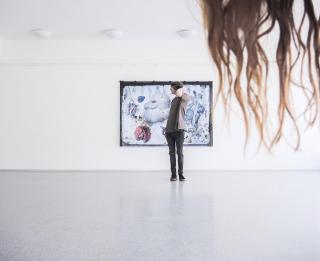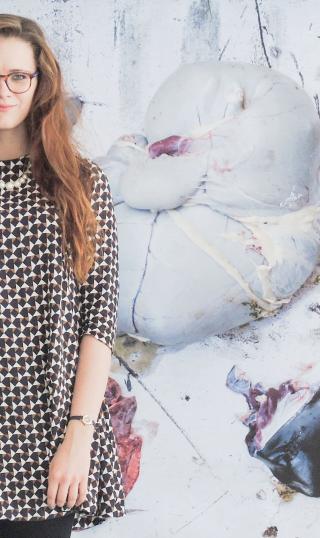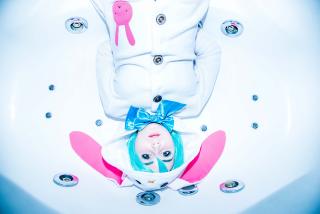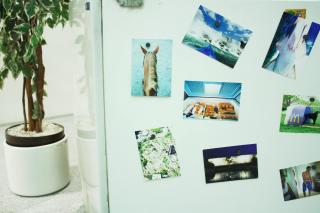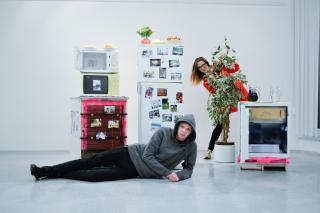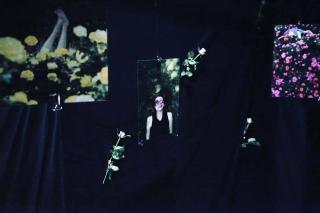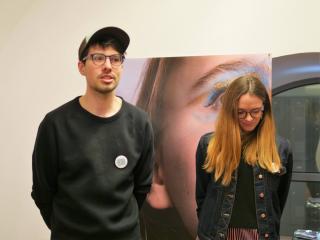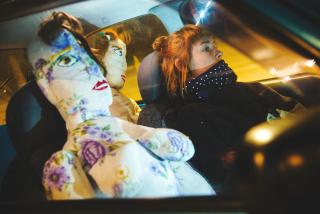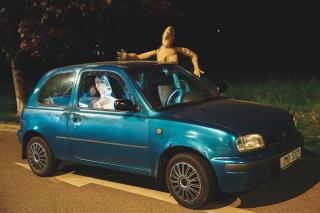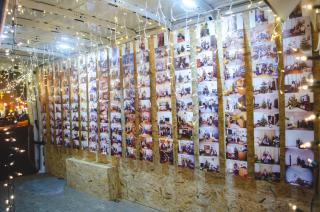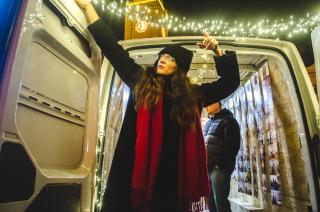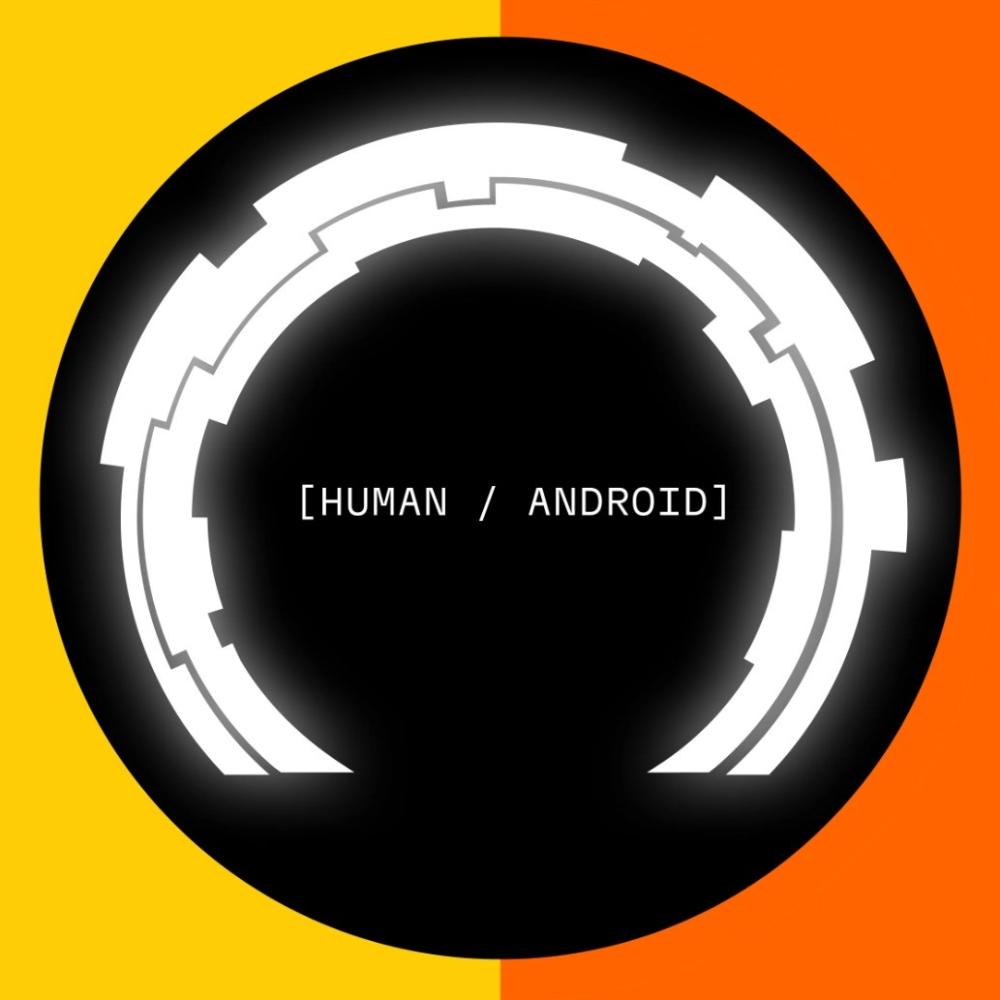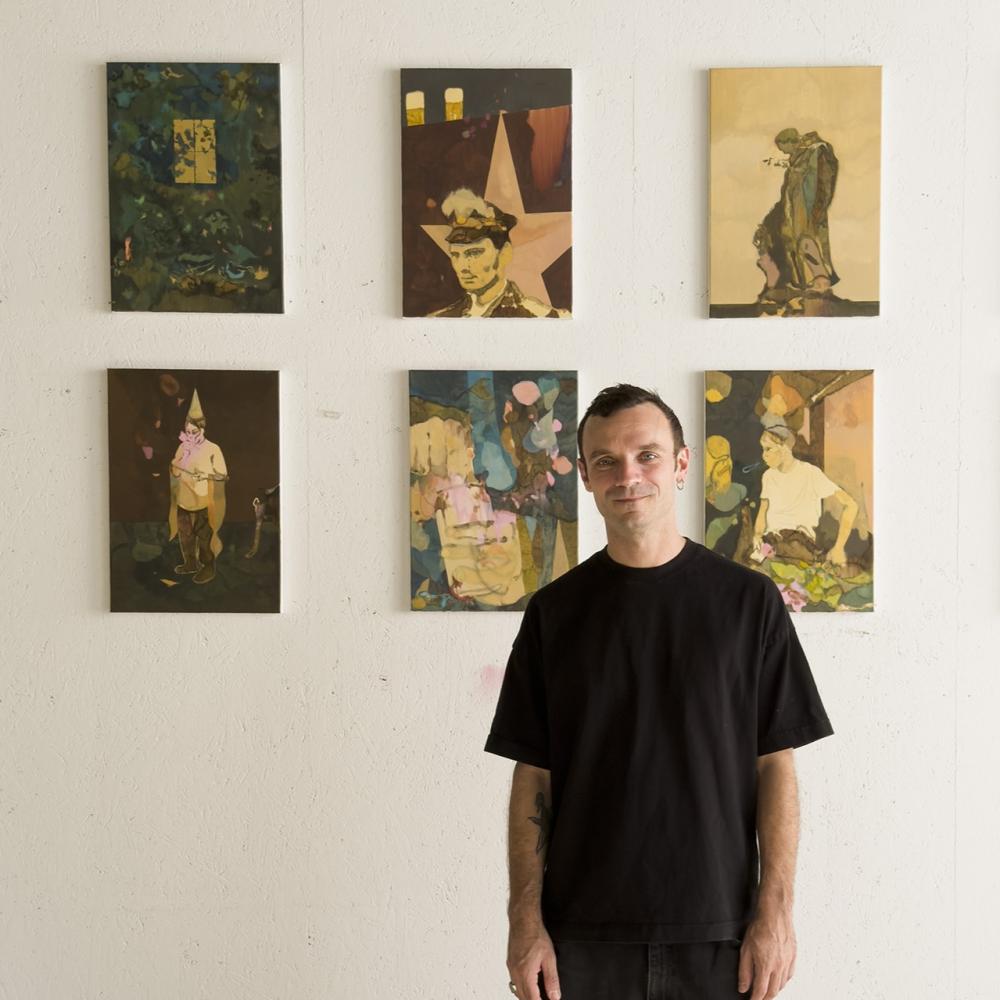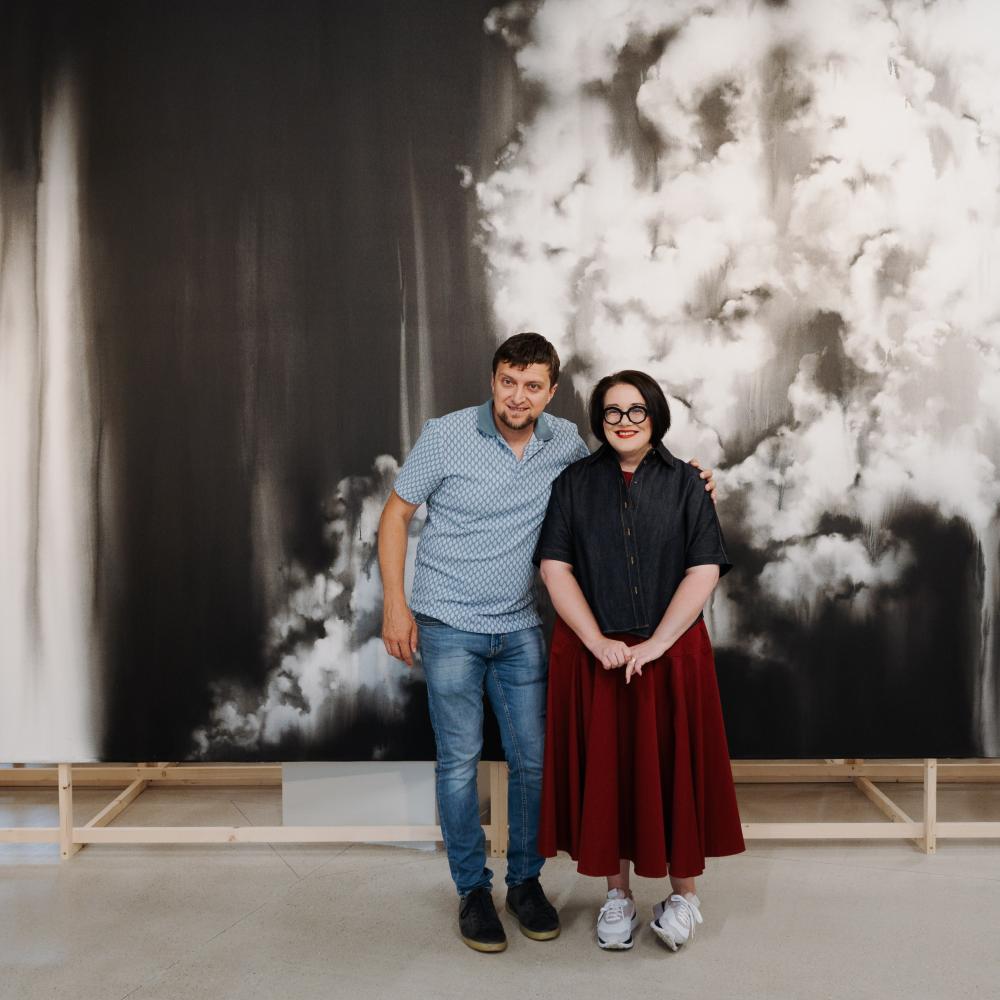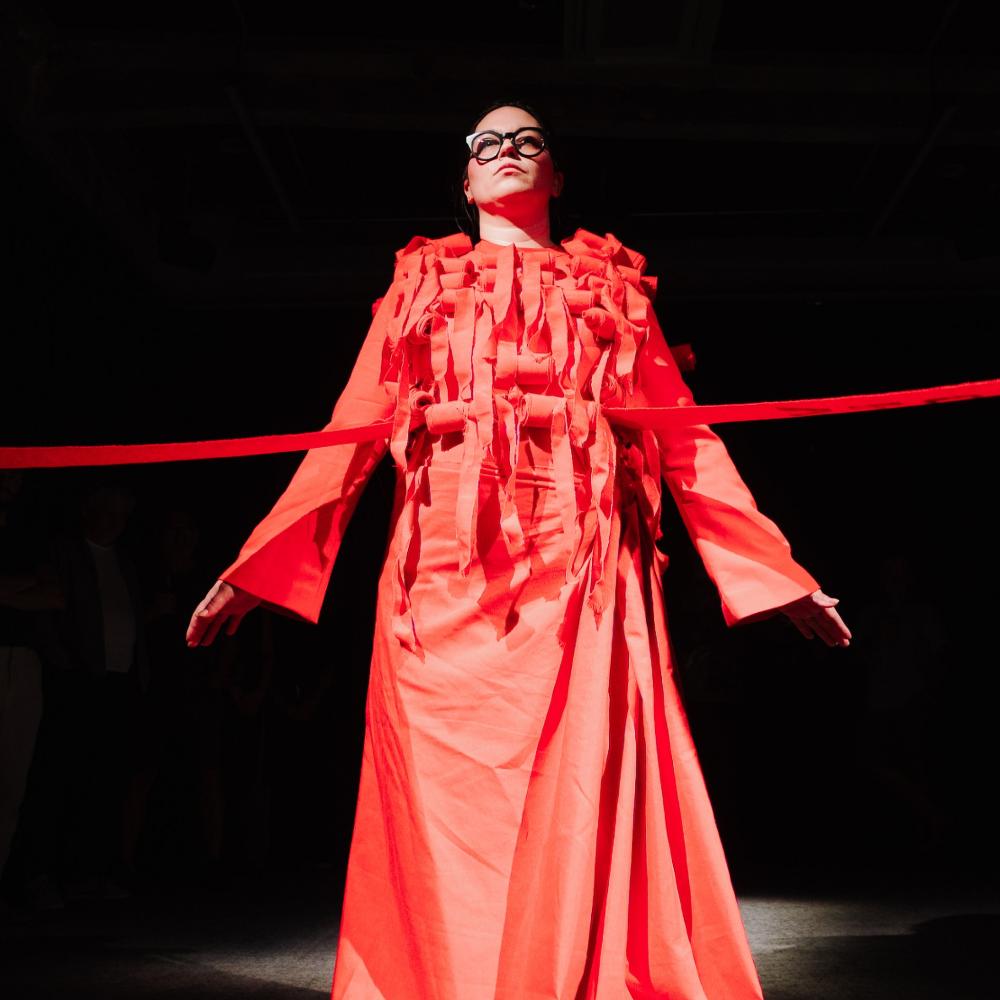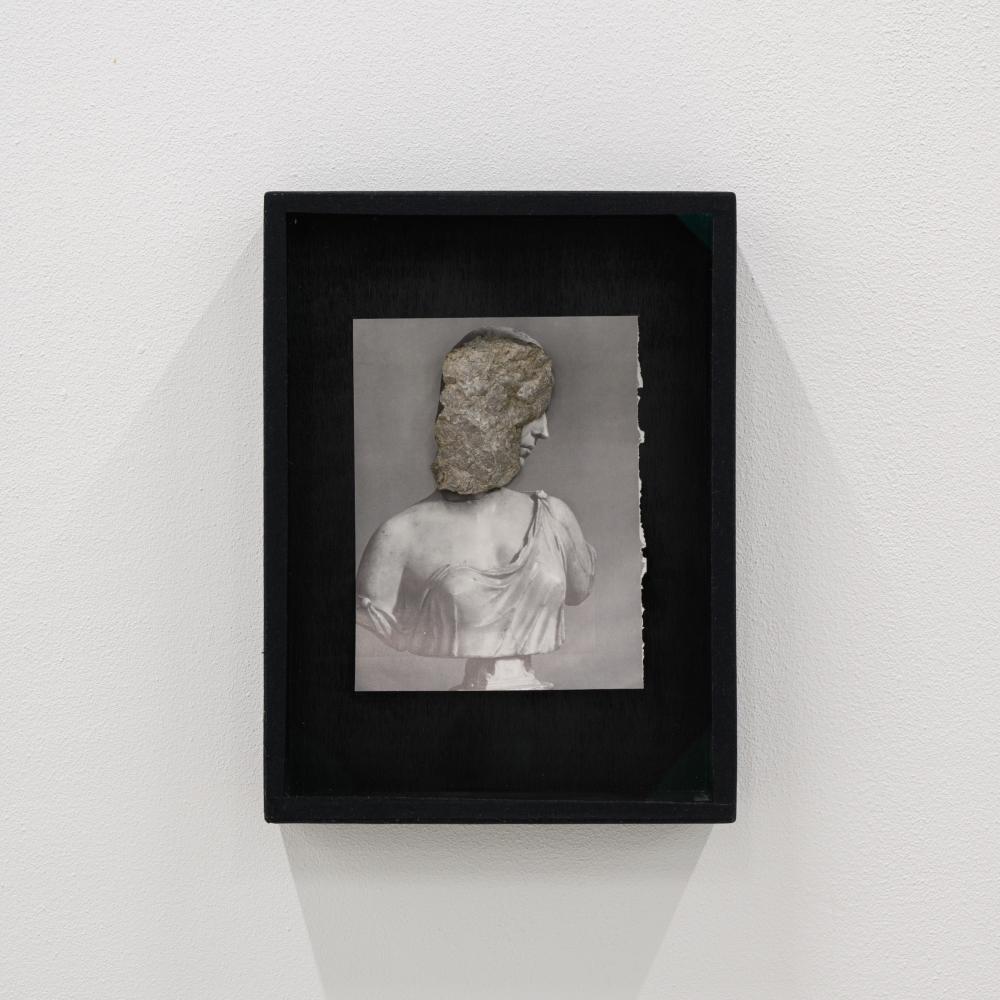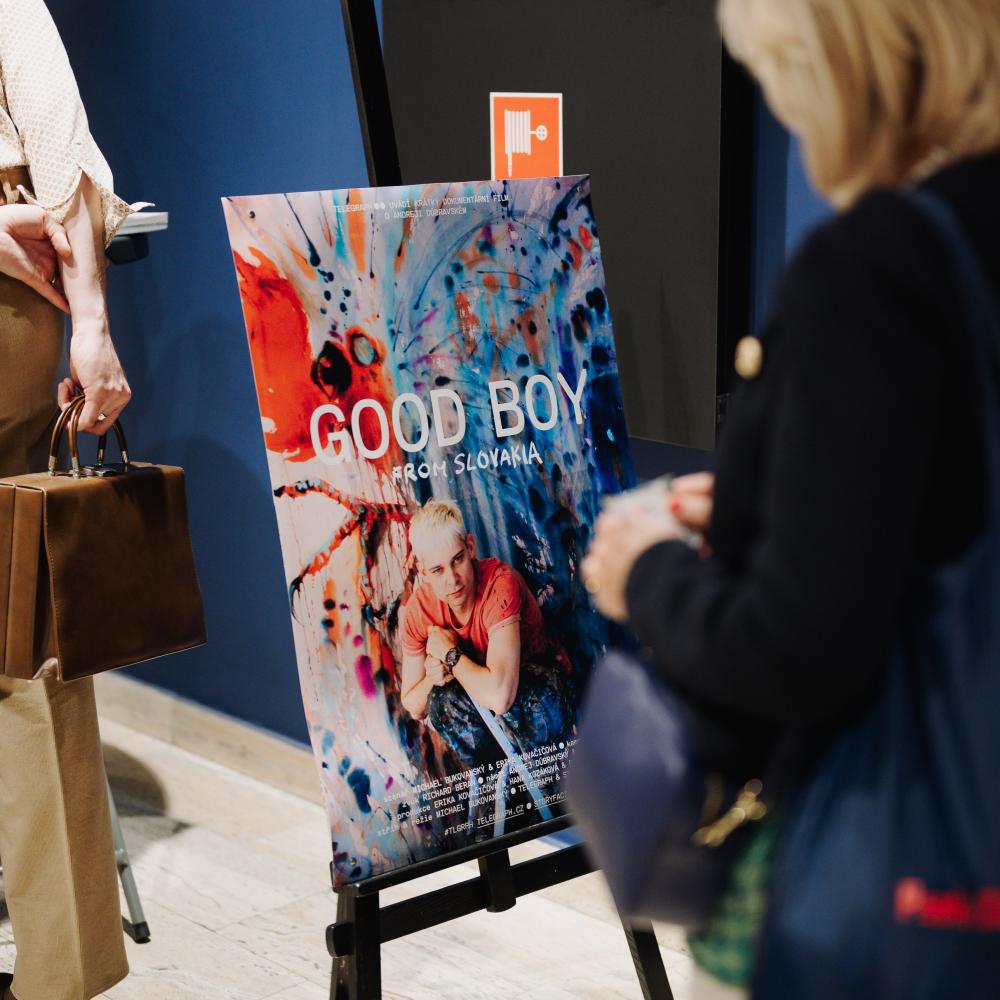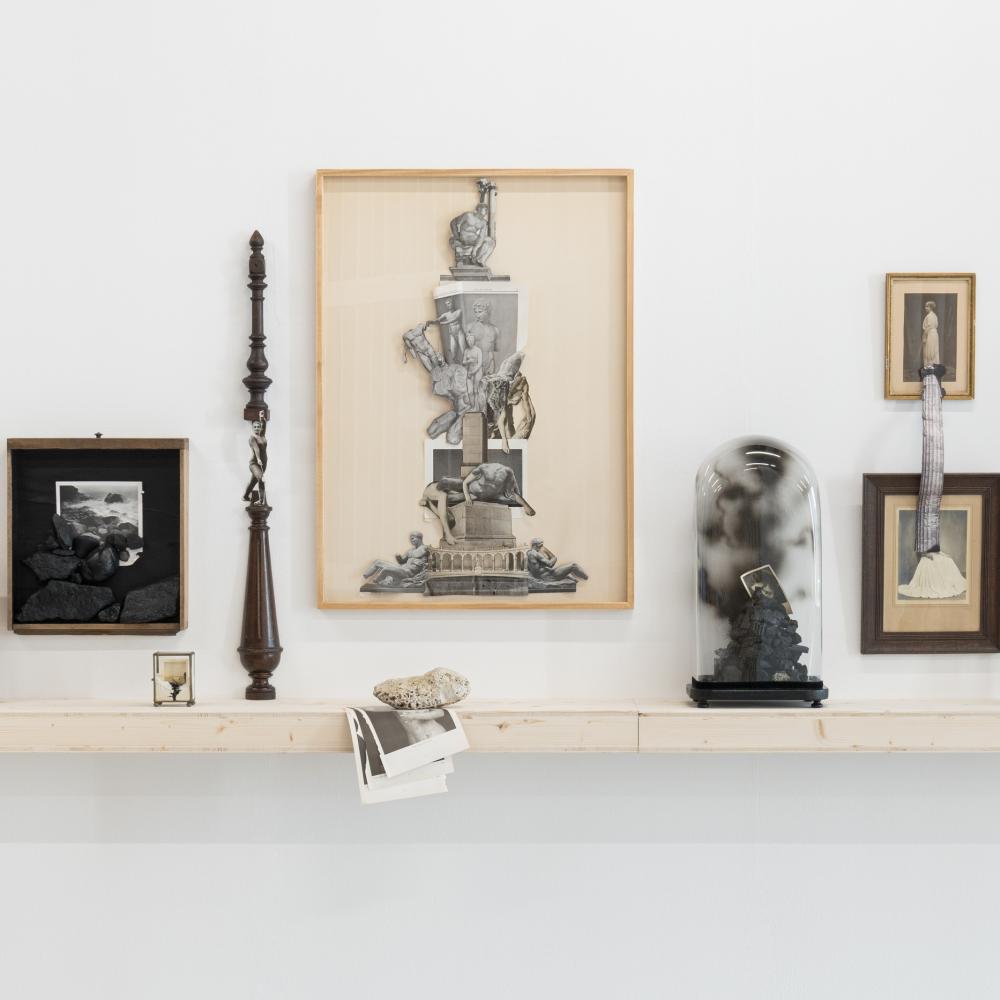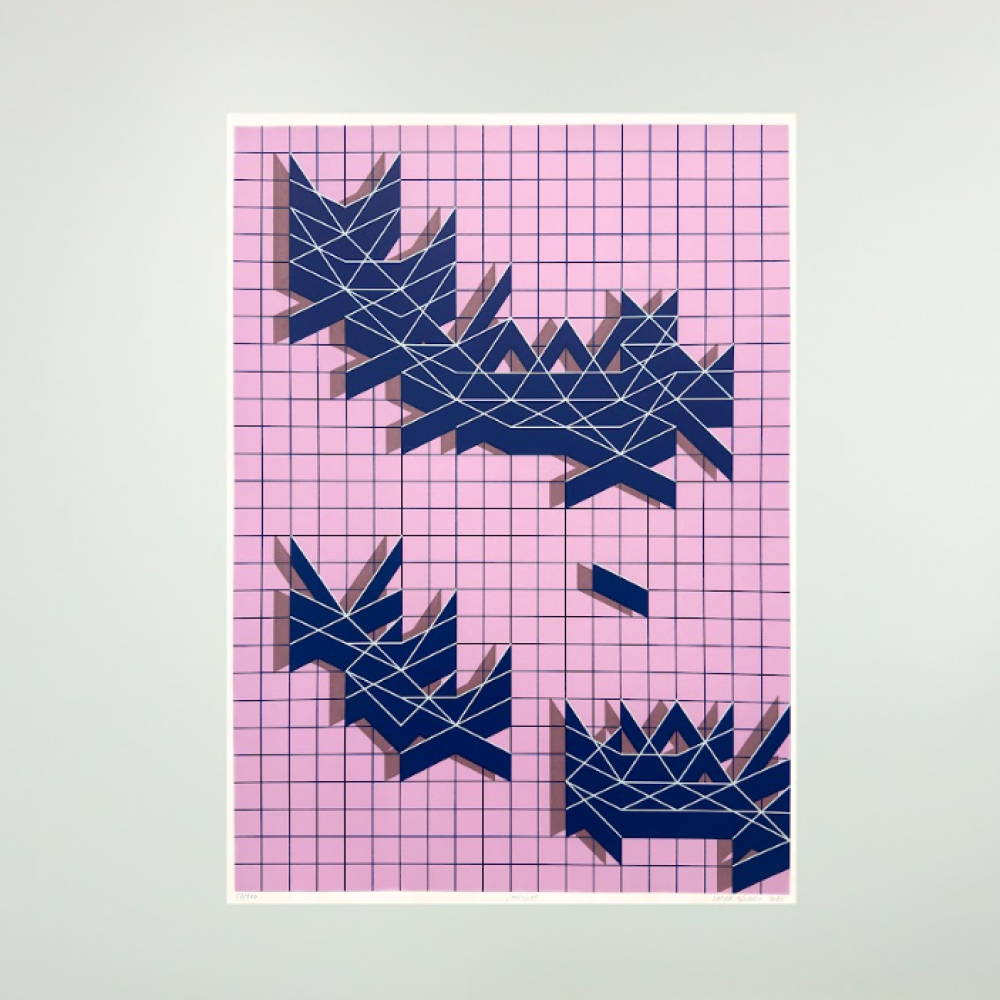
Vendula Burgrová graduated from the Advertising Photography studio at the Tomas Bata University in Zlín. Currently she is a teacher of photography and professional subjects at the Secondary School of Design and Fashion in Prostějov. The main theme of her photographic activity is conceptual work, which she has been intensively involved in for several years. It is not impossible that you have met her at the Telegraph Gallery, as she is involved, among other things, in the photographic recording of some exhibition openings or installations.
Vendula Burgrová is behind a number of photographic projects presented at the Prostějov Contemporary Art Gallery. The first exhibition was devoted to a photographic series called "In", which dealt with the issue of slaughterhouses. In 2018, visitors to the gallery were able to see the installation "Where is my home", where the photographer presented a documentary depicting the home of a Czech family that emigrated to Canada in 1969 and continues to commemorate its origins with its interior. In the same year, together with the Advertising Photography Studio, she participated in the exhibition "Anthropocene", which focused on the impact of human activity on the Earth's ecosystem. In 2018, together with photographer Katarína Križanová, she created an installation entitled "Růžena". An equally interesting project was the three-day exhibition project "Christmas is Here", which is the result of long-term documentation of families at Christmas trees. The interior of a lorry, which was placed in Prostějov's T. G. Masaryk Square at the end of 2021, became the exhibition space. She is also co-organiser and curator of the Prostějov Contemporary Art Festival. In addition, she has also exhibited in Olomouc, where she created an installation for the Basement Project called Pheasant full of raspberries.
On Saturday, April 30, 2022, Vendula Burgrová will guide those interested in a photographic workshop on the topic of Inner Landscape. Find out what you can expect from this event - and much more - in the following interview. Capacity for the workshop is limited. Tickets can be purchased here.
How would you describe your journey into the photographic medium?
I was introduced to photography in primary school when I owned my first Konica camera. Back then, I was involved in documenting what was happening in the classroom. This interest gradually deepened in high school, where I really enjoyed photography and making videos, which I got into thanks to a film camp in Sobotín. Gradually I became a documenter of school-wide activities. Back then it was something completely different, people looked at me as a fool with a camera, whereas today everyone has a mobile phone at hand. Everyone is taking selfies, filming reels for social media and it's not unusual. My interest in documentary photography gradually led me to the Tomas Bata University in Zlín, where I enrolled to study Advertising Photography. To sum it up, I think it was such a standard cliché process, where you first take photos for fun, which gradually crystallizes into something serious.
What kind of subject matter do you focus on in your work?
I am primarily focused on conceptual work. At university, we were led more towards the technical aspects of photography and as it happens, you end up gravitating towards the exact opposite. That's not to say that I don't photograph in a non-technical way, but technique isn't entirely key for me. I'm more concerned with what I'm shooting than what equipment I'm shooting on. In the process I need to have an idea, a concept that I perceive as the most important in my work. I enjoy documentary photography the most, where I get a break after creating work that requires a certain technical precision, such as fashion or product. I love snapshot photography and in a way I seek out quirky moments. Or maybe it's more like these moments seek me out.
Have you ever had an unusual photo shoot that has been deeply etched in your memory?
I don't know if it can be considered completely unconventional, but I photographed a series dedicated to cosplay. It was definitely something I was exposed to more in depth for the first time and I enjoyed it immensely. I ended up exploring this topic in more detail in the practical part of my bachelor's thesis.
Are you also involved in classic, analogue photography? Do you see its importance in the current era of digitalization and automation?
Yes, I do. Analogue work is something we drill into photography students in school throughout their first year. One must first learn the craft so that one can then transfer the techniques learned to the digital environment. This rule has been changing a bit lately, creatives are now more focused on the digital route, but I still think classical photography has its relevance today. It's where one learns the most about the necessary technical aspects of the medium, and at the same time one is forced to think more about photography itself, where one is limited, for example, by the number of images that photographic film will allow one to take. I see analogue as a relaxing activity. I myself am a Flexaret photographer, through which I am realizing some of my long-term projects that are in the drawer for now. When I travel, I only take a small Olympus Mju with me, and I tend to take snapshots on 35mm film to capture moments of memory. With this format, I don't have to think long and spend a lot of time on it, which I can instead invest in exploring the place I'm visiting.
You teach the course "Photography in Practice" at the Secondary School of Design and Fashion in Prostějov, majoring in Multimedia Production. How does it feel to pass on your experience and knowledge to students? Does it involve any pitfalls?
Transmitting knowledge to students is great, however, this process is not only one-sided. On the contrary, I am also constantly learning new things through my students and also learning how to teach. And let's face it, they belong to Generation Z, which focuses its interest intensely on social networking, which is what we millennials do, but perhaps not to such an intense degree. I'm constantly surprised that this young generation is able to give people a completely different feedback, a different and enriching view of the world. I like to have dialogues with my students. After all, discussing the resulting images develops our visual literacy and pushes us further. The pitfall I find is that even though I teach a purely practical subject, some may view it as a simple process of taking cameras in hand and setting out to take a picture. But inherent in the practice, too, is the necessary knowledge of theory. For example, it's important to know that if we want to pursue capturing a portrait, it's useful to mention how this has been the case throughout history. In short, it is good when theory is intertwined with practice.
Are you currently working on a project?
I currently have several projects in the works. The biggest one is a continuation of my master thesis in which I photographed cultural houses. I am following these up with other architectural objects such as cinemas and falconry. Other activities I am currently involved in with my friends include the preparation of a film camp, which will focus on both film and photography and will take place in August in Lančovská Bay. Previously this camp was known as the Sobotín Film Camp. Furthermore, as part of the Festival of Contemporary Art in Prostějov, I am preparing with Magdalena Jansová an exhibition of our late friend, the well-known photographic personality Karel Novák, which will be on display in the Prostějov City Museum. The exhibition will of course focus on the themes of nudism and naturalness and will be co-curated by Kača Olivová, who is close to these themes. Furthermore, for example, we are collaborating with Karolina Jansová, a student of scenography at the theatre faculty in Switzerland, on the photographic part of the upcoming exhibition, which focuses on the theme of ghosts and which she is working on with Natalia Košt'álová. This was preceded by their smaller exhibition "Ghost in our Closet", which recently took place in the Zlatá brána shopping centre under the auspices of the Prostějov Contemporary Art Gallery. Now we are planning a similar but larger project in Prague.
Mira Macík, the curator of Telegraph Gallery mentioned his first curatorial project, which was connected with the presentation of your images. Could you tell the readers what it was about?
This exhibition was our first collaborative output. We called it "V" and it was dedicated to the issue of killing. At that time it was a very debated topic, the European Union was going to ban these events completely. We took the exhibition as a polemic about the problem, a reflection on what traditions we are based on and how these traditions affect today. The images were not primarily intended to represent the act of slaughter itself, but rather we conceived of them as pictorial works of art on which the entrails were laid out. The exhibition also included symbolic elements referring to Christian iconography. There were many possible interpretations of these photographs and it was up to each person to decide how they approached the issue and what their opinion was.
On Saturday 30 April, the Telegraph will be running a photography workshop on the theme of Inner Landscape. What can interested parties expect from this event?
I'd like to start the workshop by looking at how photography itself can be approached in general, as well as incorporating a small historical window of possible views of the medium into the presentation. We will then head outside where the participants will learn the basics of composition and the technical side of photography. I would like them to try to form their own concept, their inner landscape and to style themselves in the imaginary role of hunters of their inner views of Olomouc. What we perceive as reality can be perceived differently by each individual. The aim will be to figure out how we each see things around us. We will end the workshop back at the Telegraph, where we will view and discuss the results of our work together.
By Pavlína Jindrová / Telegraph Gallery
